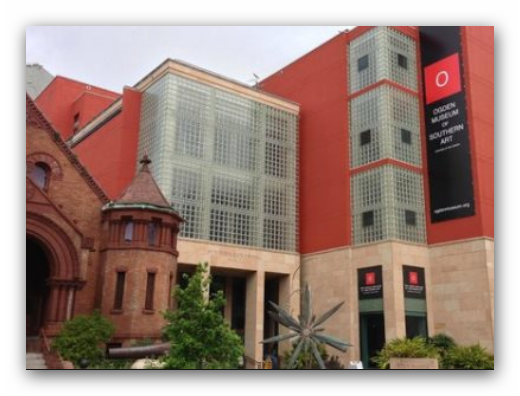Apr 11 2019 - Sep 8 2019
New Orleans, LA
The Ogden Museum is proud to present an exhibition of the works of American Abstract Expressionist artist, Dusti Bongé. Widely considered to be the first Mississippi artist to work consistently in a Modernist style, Bongé’s paintings moved from figurative depictions of her Mississippi home in the 1930s, through a period of Surrealism, and into an Abstract Expressionist style that defined her mature work. This exhibition brings together works from throughout her career to tell the story of one woman’s fierce dedication to a creative life, culminating in a body of work that stands testament to her strong contribution to American Art after World War II.
Born in 1903 in Biloxi, Mississippi, Dusti Bongé (nee Eunice Lyle Swetman) graduated from Blue Mountain College and attended the Bush Conservatory in Chicago before embarking on a stage career. In the 1920s she worked as an actress in New York. In 1927 she married a talented young painter, Archie Bongé, and the couple had a son, Lyle, in 1929. Archie saw a natural talent for painting in Dusti, and encouraged the endeavor.
Realizing that they did not want to raise their child in the city, the family moved to Biloxi in 1934. The artist, Walter Ingles Anderson of Ocean Springs, had been friends with Archie at the Pennsylvania Academy of the Fine Arts, and had served as best man at the couple’s wedding. In Biloxi, Archie and Walter became close again, and Archie began to paint the flora, fauna and built environment of his new home, as well as portraits of his young family. Within two years, Archie died of Lou Gehrig’s disease. Dusti began painting in earnest during this time, finding solace among Archie’s paints and brushes in the small studio he had built in their back yard.
In 1939, her work was exhibited at the Contemporary Arts Gallery in New York City. By the mid-1940s, she was showing at the famed Betty Parson’s Gallery, champion of the New York School. In 1956, Dusti Bongé had her first solo exhibition at Betty Parson’s, and continued to show there until 1974. As a single mother in Mississippi, and in an age of rampant gender-inequality in the art market, Dusti Bongé maintained a voice in the New York art dialogue for over three decades.
Bongé’s earliest works were figurative – often still life paintings in a straightforward realist style or regionalist depictions of her Biloxi home in a style reminiscent of her late husband’s, yet with a movement toward Cubism. She quickly began to develop her own style in the late ‘30s, though, with a move toward surrealism that would last over a decade. A major shift toward abstraction occurred in the early ‘50s in a series she called Keyhole People. By the mid-50s, the work of Dusti Bongé was situated firmly in Abstract Expressionism. These mature works show a confident hand, and an artist comfortable following her intuitive approach to the surface. During this highly productive period from the mid-50s through the late 1970s, Dusti Bonge created work in a wholly unique style, marked by a powerfully sensuous and emotive quality, with a move from highly-charged color toward darkness and a focus on the void. The later works toward the end of her life focused on abstract miniatures (often executed on joss paper), as well as experimentations with shaped surfaces, light elements and new materials. She created her last work of art in 1991.
This exhibition, drawn from both private and public collections, includes work from every period of her production. From American Regionalism through the modernist movements of Surrealism and Abstract Expressionism, this exhibition not only follows the dominant trends in American Art, but also follows the maturation of Mississippi’s first Modernist, and one woman’s struggle.
Credit: Exhibition overview from museum website
Exhibition Venues & Dates
Apr 11 2019 - Sep 8 2019
New Orleans, LA
